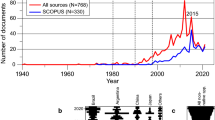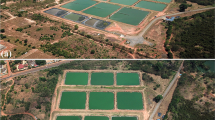Abstract
Invasions of nonnative species such as zebra mussels can have both ecological and economic consequences. The economic impacts of zebra mussels have not been examined in detail since the mid-1990s. The purpose of this study was to quantify the annual and cumulative economic impact of zebra mussels on surface water-dependent drinking water treatment and electric power generation facilities (where previous research indicated the greatest impacts). The study time frame was from the first full year after discovery in North America (Lake St. Clair, 1989) to the present (2004); the study area was throughout the mussels’ North American range. A mail survey resulted in a response rate of 31% for electric power companies and 41% for drinking water treatment plants. Telephone interviews with a sample of nonrespondents assessed nonresponse bias; only one difference was found and adjusted for. Over one-third (37%) of surveyed facilities reported finding zebra mussels in the facility and almost half (45%) have initiated preventive measures to prevent zebra mussels from entering the facility operations. Almost all surveyed facilities (91%) with zebra mussels have used control or mitigation alternatives to remove or control zebra mussels. We estimated that 36% of surveyed facilities experienced an economic impact. Expanding the sample to the population of the study area, we estimated $267 million (BCa 95% CI = $161 million–$467 million) in total economic costs for electric generation and water treatment facilities through late 2004, since 1989. Annual costs were greater ($44,000/facility) during the early years of zebra mussel infestation than in recent years ($30,000). As a result of this and other factors, early predictions of the ultimate costs of the zebra mussel invasion may have been excessive.
Similar content being viewed by others
References
Benson AJ, Boydstun CP (1995) Invasion of the zebra mussel into the United States. In: LaRoe ET, Farris GS, Puckett CE, Doran PD, Mac MJ (eds.), Our living resources: a report to the nation on the distribution, abundance, and health of U.S. plants, animals and ecosystems. U.S. Department of the Interior, National Biological Service, Washington, DC, pp 445–446
Connelly NA, Knuth BA (2002) Using the coorientation model to compare community leaders’ and local residents’ views about Hudson River ecosystem restoration. Society and Natural Resources 15:933–948
Dillman DA (2000) Mail and internet surveys: the tailored design method. John Wiley & Sons, New York
Drake JM, Bossenbroek JM (2004) The potential distribution of zebra mussels in the United States. BioScience 54:931–941
Garcia-Berthou E, Alcaraz C, Pou-Rovira Q, Zamora L, Coenders G, Feo C (2005) Introduction pathways and establishment rates of invasive aquatic species in Europe. Canadian Journal of Fisheries and Aquatic Science 62:453–463
Giles EF, Brown KL (eds.) (2003) Platts 2003 UDI directory of electric power producers and distributors. 111th ed. Platts-McGraw-Hill, Boulder, CO
Hesterberg T, Moore DS, Monaghan S, Clipson A, Epstein R (2006) Bootstrap methods and permutation tests. In: Moore DS, McCabe GP (eds), Introduction to the practice of statistics. 5th ed. W. H. Freeman, New York. pp 14-1–14-70
MacIsaac HJ (1996) Potential abiotic and biotic impacts of zebra mussels on the inland waters of North America. American Zoologist 36:287–299
Mack RN, Simberloff D, Lonsdale WM, Evans H, Clout M, Bazzaz FA (2000) Biotic invasions: causes, epidemiology, global consequences, and control. Ecological Applications 10:689–710
O’Neill CR (1997) Economic impact of zebra mussels: the 1995 National Zebra Mussel Information Clearinghouse Study. National Aquatic Nuisance Species Clearinghouse Reprint Series, Brockport, NY
O’Neill CR, MacNeill DB (1989) Dreissena polymorpha: an unwelcome new Great Lakes invader. New York Sea Grant Extension Fact Sheet. Revised 1991
Park J, Hushak LJ (1999) Zebra mussel control costs in surface water using facilities. Technical Summary Series OSHU-TS-028. Available from the Ohio Sea Grant College Program, Columbus
Pimentel D (2005) Aquatic nuisance species in the New York State Canal and Hudson River Systems and the Great Lakes Basin: an economic and environmental assessment. Environmental Management 35:692–701
Raikow DF (2004) Food web interactions between larval bluegill (Lepomis macrochirus) and exotic zebra mussels (Dreissena polymorpha). Canadian Journal of Fisheries and Aquatic Science 61:497–504
Ram JL, McMahon RF (1996) Introduction: the biology, ecology, and physiology of zebra mussels. American Zoologist 36:239–243
Roberts L (1990) Zebra mussel invasion threatens U.S. waters. Science 249:1370–1372
Strayer DL, Hattala KA, Kahnle AW (2004) Effects of an invasive bivalve (Dreissena polymorpha) on fish in the Hudson River estuary. Canadian Journal of Fisheries and Aquatic Science 61:924–941
Winkler G, Sirois P, Johnson LE, Dodson JJ (2005) Invasion of an estuarine transition zone by Dreissena polymorpha veligers had no detectable effect on zooplankton community structure. Canadian Journal of Fisheries and Aquatic Science 62:578–592
Acknowledgments
Development of this publication was supported by the National Sea Grant College Program of the U.S. Department of Commerce’s National Oceanic and Atmospheric Administration under award NA16RG1645-020122 to the Research Foundation of the State University of New York for New York Sea Grant. The views expressed herein do not necessarily reflect the views of any of those organizations.
Author information
Authors and Affiliations
Corresponding author
Rights and permissions
About this article
Cite this article
Connelly, N.A., O’Neill, C.R., Knuth, B.A. et al. Economic Impacts of Zebra Mussels on Drinking Water Treatment and Electric Power Generation Facilities. Environmental Management 40, 105–112 (2007). https://doi.org/10.1007/s00267-006-0296-5
Received:
Accepted:
Published:
Issue Date:
DOI: https://doi.org/10.1007/s00267-006-0296-5




